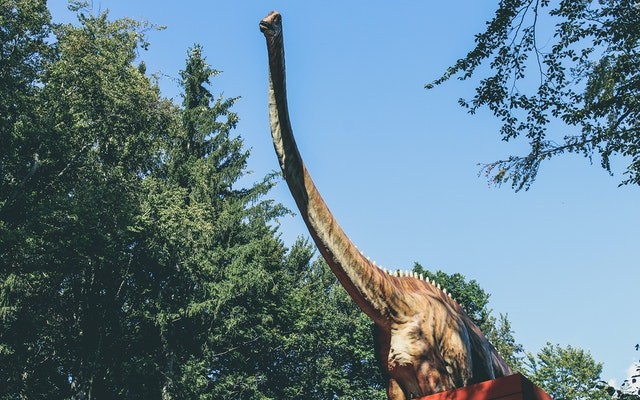Giant, long-necked sauropods, believed to be among the largest terrestrial animals ever to have existed, preferred to inhabit Earth's warmer and more tropical regions, suggesting the animal may have possessed distinct physiology from other dinos, as per a new study led by researchers at UCL and the University of Vigo.

How Reseachers Discovered That Sauropods Prefer Warmer Regions
Study published in Current Biology addressed the mystery of why sauropod fossils are exclusively discovered at lower latitudes, whereas fossils of other primary dinosaur groups appear to be widespread, with many found in the polar regions.
The researchers studied the fossil record from the Mesozoic era (the time of the dinosaurs), which lasted from around 230 to 66 million years ago, looking at the occurrences of fossils of the three main dinosaur types: sauropods, theropods, and ornithischians, which include the Triceratops.
Sauropods were found in warmer, drier settings than other dinosaurs, based on this fossil evidence and knowledge on how continents have migrated around the world during this era, according to Phys.org.
Co-author Dr. Philip Mannion (UCL Earth Sciences) notes that their findings are significant suggesting that the heat needs of sauropods were different from those of other dinosaurs, and that they relied more on the external environment to keep their bodies warm-similar to modern-day reptiles. Perhaps their physiology was unique because they were so massive.
Adaptation of Sauropods to Warm Environment
Sauropods may have been better able to cool themselves than mammals are now because of a combination of traits. With their long necks and tails, they may have possessed an effective breathing system like that of birds, which would have given them greater surface area.
In order to keep their bodies warm, several theropods and ornithischians developed feathers or downy coats. This raises the possibility that they created their own heat while submerged. There is no indication of this form of insulation in sauropods.
As far as egg-warming tactics go, sauropods may have had a distinct advantage over other dinosaurs. In order to keep their eggs warm, theropods presumably sat on them, whereas ornithischians may have relied on the heat from decomposing vegetation. It's possible that sauropod eggs were kept warm by the sun and the earth.
Sauropod fossils have never been found above a latitude of 50 degrees north, which includes much of Canada, Russia, northern Europe, and the United Kingdom, or below a latitude of 65 degrees south, which includes Antarctica. Theropods and ornithischians, on the other hand, are well-documented above 50 degrees north in later times (from 145 million years ago).
Sauropod fossils were found in a wide range of locations throughout the Mesozoic period, so researchers employed a statistical method to correct for gaps in the fossil record and also assess where the maximum diversity of dinosaur kinds occurred at various times.
Is Dinosaur a Warm-blooded Animal?
Climate data was used to determine the temperature ranges of the dinosaur kinds' habitats, and they found that sauropods' distribution throughout the latitudinal range was more constrained in colder eras.
As a result of these findings, they employed habitat modeling to identify areas where sauropod dinosaurs may thrive.
Even while dinosaurs were previously considered to have been cold-blooded, reliant on the external environment for heat, it is now assumed they were closer to "warm-blooded" that produces some of their own body heat.
As a result of their unique metabolism, sauropods may have been more closely related to the cold-blooded dinosaurs than other species.
Related Article : Scientists Uncovered Fossils of Two New Dinosaur Species in China From 120 Million Years Ago
For more news, updates about dinosaurs and similar topics don't forget to follow Nature World News!
© 2025 NatureWorldNews.com All rights reserved. Do not reproduce without permission.





